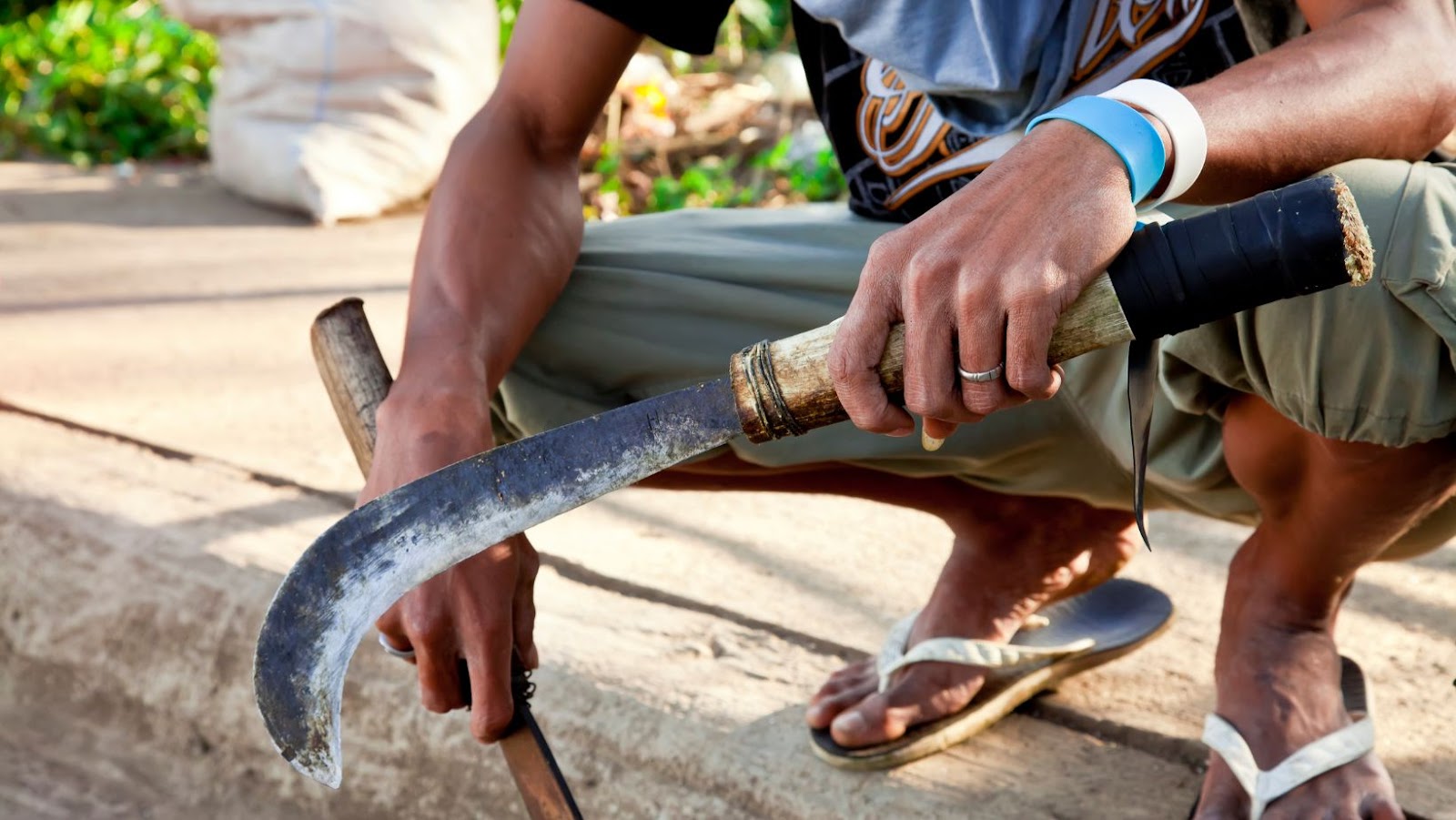Are you looking for the perfect machete to help with outdoor or agricultural tasks? If so, selecting a high-quality tool that meets your specific needs is essential. Choosing the right machete can be intimidating because many styles and sizes are available today. Don’t worry; we’ll show you exactly how to select the ideal one for whatever job you need to be done. This article will provide an overview of different machetes, as well as advice on selecting with sheer size, handle length and grip type in mind. Read on for our step-by-step guide to finding the right machete for all your slicing and chopping activities.
Table of Contents
The Different Types of Machete Blades and What They’re Used For
Machete blades come in a variety of shapes and sizes. The most common type is the straight-edged blade, the most straightforward and versatile design for chopping or slicing through dense vegetation. A curved-blade machete is best used for clearing large brush areas quickly, while recurve machetes are designed to cut through rigid fibrous materials like vines and roots. If you’re looking to do more detailed work, consider a bolo machete – it has an angled edge perfect for finer tasks such as shaping wood or carving intricate designs into stone or other materials.
Selecting The Right Machete Size
When selecting your machete, one of the primary considerations should be the size of the blade. The length of the blade can range from 10 to 24 inches, and choosing one that is too large or small for your needs can lead to difficulty slicing through materials. If you’re looking for a machete for general-purpose use, like light chopping and slicing, then opt for a model with an 18-inch long blade. For heavier-duty activities such as clearing thick brush or hacking through roots and vines, go with a longer blade in the 20 to 24-inch range.
Handle Length
The handle of your machete should also be considered when selecting the right tool for your needs.

Longer machetes typically have longer handles, providing more leverage while working and making it easier to control the tool. If you’re using the machete for light-duty activities such as cutting small limbs or clearing brush, then a shorter handle may be more comfortable and easy to use.
Grip Type
The type of grip on your machete will also significantly affect how well it functions. Traditional machetes usually have wooden handles with finger grooves for improved comfort and safety. Still, newer models feature rubberized grips that provide better shock absorption and grip when working with wet material like grass or weeds. Some models even have ergonomic designs that reduce fatigue while chopping or slicing. Selecting a grip type that feels comfortable in your hands allows you to maximize your efficiency while using the machete.
How to Properly Hold and Use a Machete for The Most Efficient Cutting
Once you’ve found the perfect machete for your needs, it is essential to know how to properly hold and use it. The best way to do this is by placing your dominant hand at the bottom of the handle with your index finger wrapped around the base of the blade. Your other hand should be placed just below the mid-point of the handle for balanced control. Ensure that both hands firmly grip either side of the handle before attempting any cutting activities. When using a machete, follow through with a full stroke rather than short, jerky motions, as these can cause fatigue and reduce accuracy.
Safety Tips When Using a Machete
When working with any sharp tool, such as a machete, it is essential to always practice safe-cutting habits. Always wear protective gear such as goggles and gloves when using a machete, and never use the tool near other people or animals. Keep your fingers away from the blade while swinging the machete to avoid serious injury. Finally, inspect your machete regularly for signs of wear and tear so that you can replace it if necessary before any significant damage occurs.
Sharpening Your Machete Blade to Keep it in Good Condition
Sharpening your machete blade is essential to maintaining its performance and keeping it in good condition. The best way to sharpen a machete is by using a whetstone or oil stone to remove any burrs from the blade’s edge.

To do this, start by wetting the stone with water or oil and then use gentle strokes along the length of the blade to remove any burrs or nicks. Once you have finished sharpening, be sure to thoroughly clean your machete before storing it away so that rust does not form on the blade.
Conclusion
Selecting the right machete for your needs is an important decision that should not be taken lightly. By considering factors such as blade length, handle length and grip type, you can ensure that you choose a tool that will provide accurate and safe results when cutting or slashing through various materials. Always take the time to check for more machetes before buying one, remember to practice safety tips while using it, and sharpen it regularly for the best results. With these tips in mind, selecting the perfect machete for your needs should be much easier.




